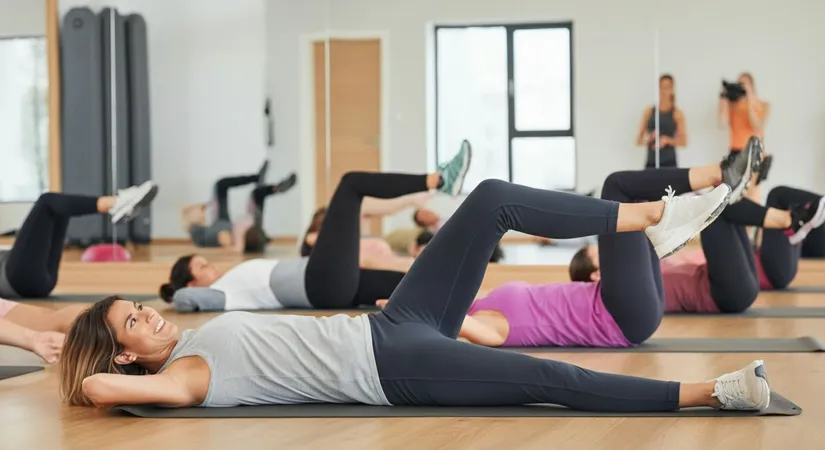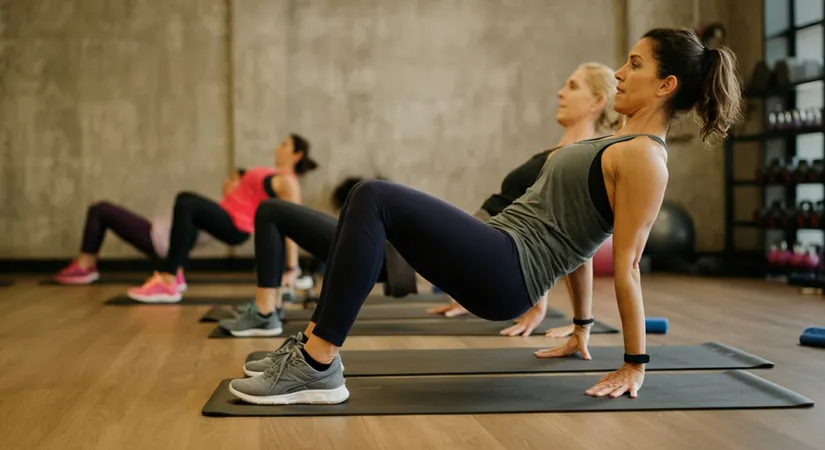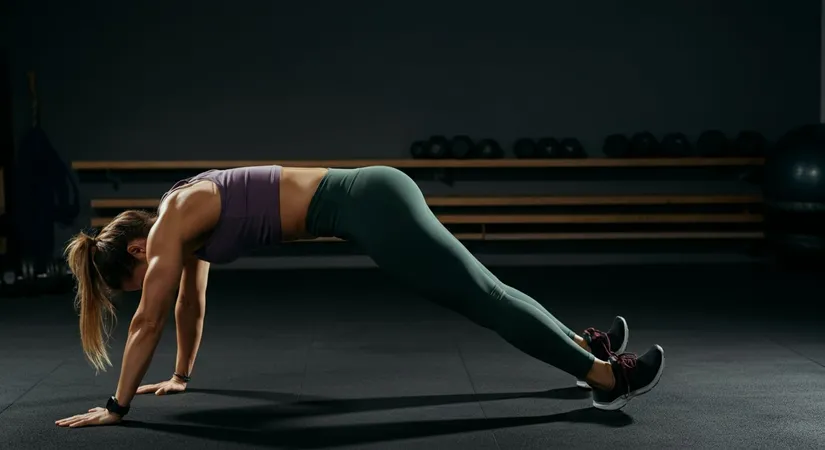Elevate Your Fitness: The Ultimate Guide to Hip Lift Exercises
Discover hip lift exercises for stronger glutes and core.
Hip lift exercises are a cornerstone in effective fitness routines, strengthening the core and enhancing overall well-being. As we delve into this ultimate guide, discover how these exercises can transform your fitness journey, offering an engaging pathway to strength and balance.
Understanding the Hip Lift: What It Is and Why It Matters
The Role of Hip Lift Exercises in Fitness
Hip lift exercises are essential for enhancing balance, posture, and muscle engagement. They primarily target the gluteal muscles, which are crucial for maintaining pelvic stability. This exercise is often recommended for improving lower body strength and correcting postural imbalances.
Key Benefits of Hip Lift Exercises
- Improved pelvic stability, which aids in reducing lower back pain.
- Enhanced gluteal muscle strength, contributing to better athletic performance.
- Increased core engagement, supporting overall body alignment.
By focusing on these benefits, individuals can achieve a more balanced and stable physique, which is beneficial for both daily activities and athletic endeavors.
How to Perform a Hip Lift
- Lie on your back with knees bent and feet flat on the floor.
- Engage your core and glutes, then lift your hips towards the ceiling.
- Hold the position briefly before lowering your hips back down.
Performing this exercise correctly ensures maximum benefit and minimizes the risk of injury. Beginners should start with a few repetitions and gradually increase as they build strength.

Step-by-Step: How to Perform a Hip Lift Correctly
Mastering the Hip Lift Technique
Performing a hip lift exercise correctly is essential for maximizing its benefits and preventing injury. Begin by lying on your back with your knees bent and feet flat on the floor. Ensure your feet are hip-width apart and your arms are relaxed at your sides.
- Engage your core muscles by pulling your navel towards your spine.
- Press through your heels and lift your hips towards the ceiling, keeping your shoulders and upper back on the floor.
- Hold the top position for a few seconds, ensuring your body forms a straight line from shoulders to knees.
Lower your hips back down slowly, maintaining control throughout the movement. Repeat this process for a set number of repetitions, focusing on form and muscle engagement.
Common Mistakes to Avoid
- Arching the lower back excessively, which can lead to strain.
- Placing weight on the neck instead of distributing it evenly across the shoulders.
- Failing to engage the core, reducing the effectiveness of the exercise.
By avoiding these common mistakes, you can ensure that your hip lift workout is both safe and effective. Remember to focus on controlled movements and proper alignment to achieve the best results.

Benefits of Hip Lifts: Strengthening Your Glutes and Core
Enhancing Core Stability and Coordination
Hip lift exercises significantly enhance core stability, which is crucial for maintaining balance and posture. By engaging the core muscles, these exercises help in stabilizing the pelvis, reducing the risk of lower back pain. For instance, athletes often incorporate hip lifts into their routines to improve their performance by ensuring a strong and stable core.
- Improved core stability aids in better balance during dynamic movements.
- Enhanced coordination supports efficient movement patterns in sports.
- Strengthened core muscles contribute to overall body alignment.
These benefits make hip lifts an essential component of any fitness regimen, particularly for those looking to enhance their athletic capabilities.
Boosting Glute Strength and Injury Prevention
Strengthening the glutes is another primary benefit of hip lifts. Strong glutes are vital for various daily activities and athletic endeavors, such as running and jumping. By targeting these muscles, hip lifts help in building power and endurance. For example, runners often experience improved speed and reduced injury risk by incorporating hip lifts into their training.
- Engage the glutes fully during the lift to maximize muscle activation.
- Maintain proper form to prevent strain and ensure effective workouts.
- Gradually increase resistance or repetitions to continue building strength.
By focusing on these aspects, individuals can enhance their glute strength, leading to better performance and reduced injury risk in both everyday activities and sports.

Creating a Hip Lift Workout Routine for All Levels
Designing a Progressive Hip Lift Routine
To create an effective hip lift workout routine, start with basic hip lifts and gradually introduce more challenging variations. This approach allows for progressive strength development and ensures that the routine remains engaging and effective for all fitness levels.
- Begin with standard hip lifts to establish a strong foundation.
- Incorporate single-leg hip lifts to increase difficulty and balance.
- Add resistance bands or weights to further challenge the muscles.
By following these steps, individuals can tailor their workouts to their current fitness level while continuously pushing their limits.
Customizing Intensity for Individual Needs
Customizing the intensity of a hip lift workout is crucial for accommodating different fitness levels and goals. This customization ensures that each session is both challenging and manageable, promoting consistent progress and motivation.
- Adjust the number of repetitions and sets based on personal endurance.
- Incorporate rest intervals to allow for recovery and prevent fatigue.
- Vary the types of hip lifts to target different muscle groups.
These adjustments help maintain a dynamic and effective workout routine, encouraging continuous improvement and adaptation to new challenges.
Innovative Hip Lift Variations
Advanced Hip Lift Techniques for Enhanced Engagement
For those seeking to elevate their hip lift workout, incorporating advanced variations can significantly enhance muscle engagement and challenge. These techniques not only increase the difficulty but also target different muscle groups, offering a comprehensive workout experience.
- Single-leg hip lifts focus on balance and unilateral strength, engaging the core and glutes more intensely.
- Resistance band hip bridges add tension, promoting muscle growth and endurance.
- Bosu ball bridges introduce instability, enhancing coordination and core stability.
By integrating these variations, practitioners can diversify their routines and achieve greater overall fitness benefits.
Implementing Variations into Your Routine
- Start with single-leg hip lifts to build foundational strength and balance.
- Progress to resistance band bridges for added resistance and muscle activation.
- Incorporate bosu ball bridges to challenge stability and coordination.
These steps ensure a gradual increase in difficulty, allowing for continuous improvement and adaptation. By varying the exercises, individuals can prevent plateaus and maintain motivation in their fitness journey.
Common Mistakes and How to Avoid Them
Ensuring Proper Form in Hip Lift Exercises
When performing hip lift exercises, maintaining proper form is crucial to avoid injury and maximize benefits. One common mistake is hyperextending the lower back, which can lead to discomfort and strain. Instead, focus on engaging your core and glutes to lift your hips, ensuring a straight line from shoulders to knees.
- Keep your feet hip-width apart to maintain balance and stability.
- Ensure your shoulders remain grounded to prevent neck strain.
- Engage your core throughout the movement to support your spine.
By adhering to these guidelines, you can perform hip lifts safely and effectively, enhancing your workout results.
Regular Assessment and Adjustment
Regularly assessing and adjusting your hip lift technique is essential for continued progress and injury prevention. Begin by evaluating your form in a mirror or recording your movements to identify any imbalances or misalignments.
- Start with a slow and controlled lift to focus on muscle engagement.
- Adjust your foot placement if you notice uneven hip elevation.
- Incorporate feedback from a trainer or use video analysis for improvement.
These steps help ensure that your hip lift workout remains effective and safe, allowing you to achieve your fitness goals without unnecessary strain or injury.
Comprehensive Hip Lift Techniques for Core and Glute Strength
Ensuring Safe and Effective Hip Lift Workouts
Frequently Asked Questions
What are the primary benefits of hip lift exercises?
How can beginners perform a hip lift correctly?
What common mistakes should be avoided during hip lift workouts?
How can hip lift exercises be adapted for different fitness levels?
Why is regular assessment important in hip lift exercises?
Discover the path to 'Healthy Beauty' with estethica's expert care. Call now for your free consultation and take the first step towards a more confident you!
📞 Call for Your Free Consultation